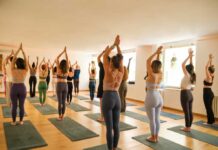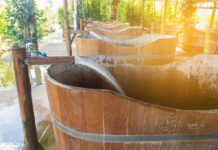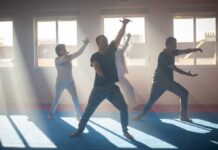
Facial exercises show promise for improving skin appearance and reducing signs of aging, but experts caution against viewing them as a miracle solution for aesthetic enhancement.
At a Glance
- A Northwestern University study suggests daily facial exercises can make middle-aged women appear approximately three years younger
- Facial yoga combines physical exercises with skincare products for a holistic approach to facial rejuvenation
- Research indicates facial exercises may offer psychological benefits such as stress reduction alongside physical improvements
- Experts clarify that while facial exercises may help with muscle tone, they cannot spot-reduce facial fat
- Scientific studies on facial exercises show promise but are limited by small sample sizes and lack of standardization
The Science Behind Facial Exercises
As we age, our facial muscles naturally lose tone and elasticity, contributing to sagging skin and wrinkles. Facial exercises, often called “face yoga,” have gained popularity as a non-invasive method to counteract these changes. Research from Northwestern University suggests promising results, finding that middle-aged women who performed daily facial exercises for 20 weeks showed improvements in upper and lower cheek fullness and appeared approximately three years younger according to blinded assessments.
The scientific rationale centers on strengthening the facial muscles beneath the skin. As these muscles become more toned, they may create a firmer foundation that helps the skin appear smoother and more lifted. Additionally, the increased blood circulation from these exercises may deliver more nutrients and oxygen to facial tissues, potentially enhancing skin health. However, most studies in this area have relatively small sample sizes and short durations, making definitive conclusions challenging.
— Derya Unutmaz, MD (@DeryaTR_) February 3, 2025
Popular Facial Exercise Methods
Several methods have emerged as particularly popular among those seeking facial rejuvenation. Face yoga typically involves holding various expressions to target specific facial muscles. Gua sha, a traditional Chinese technique using a smooth-edged tool to gently scrape the skin, aims to reduce tension and improve circulation. Face rollers and microcurrent devices provide gentle massage and muscle stimulation, potentially reducing puffiness and temporarily tightening the appearance of skin.
Many skin care brands have capitalized on this trend by developing products that complement facial exercises. Some formulations include ingredients like neuropeptides designed to relax facial muscles and reduce the appearance of fine lines, similar to how Botox works but without injections. The practice of patting products onto the skin, a technique long popular in Asian beauty routines, has also gained traction in Western markets as it combines product application with gentle stimulation.
Benefits Beyond Beauty
While aesthetic improvements often drive interest in facial exercises, research suggests potential benefits beyond appearance. Some studies indicate these exercises may help reduce stress and facial tension, which can contribute to a more relaxed and youthful appearance over time. For those with medical conditions like Bell’s palsy, specialized facial exercises have shown particular promise. A recent study published in Nature demonstrated that patients using a novel facial stretching technique showed greater improvements in facial symmetry and voluntary movement compared to conventional treatments.
The self-care ritual aspect shouldn’t be overlooked. Taking time each day to focus on facial exercises can become a mindful practice that reduces stress and promotes overall well-being. Many practitioners report improved mood and confidence, regardless of objective physical changes. This holistic approach aligns with current wellness trends that emphasize the connection between physical practices, mental health, and appearance.
Realistic Expectations and Complementary Approaches
Dermatologists and skincare experts emphasize that facial exercises should be viewed as just one component of a comprehensive approach to skin health. Fundamental practices like sun protection, adequate hydration, proper nutrition, and quality sleep remain essential foundations for maintaining youthful skin. Expectations should remain realistic, as facial exercises cannot replicate the immediate results of cosmetic procedures like Botox or fillers, nor can they spot-reduce facial fat.
For those interested in trying facial exercises, consistency appears key to seeing results. The Northwestern study participants performed 30-minute daily routines for the first 8 weeks before reducing to alternate days. Social media has amplified interest in these techniques, with millions viewing tutorial videos. While this accessibility is beneficial, it’s important to approach viral trends critically and consult with skincare professionals when possible, especially for those with skin conditions or concerns.


















